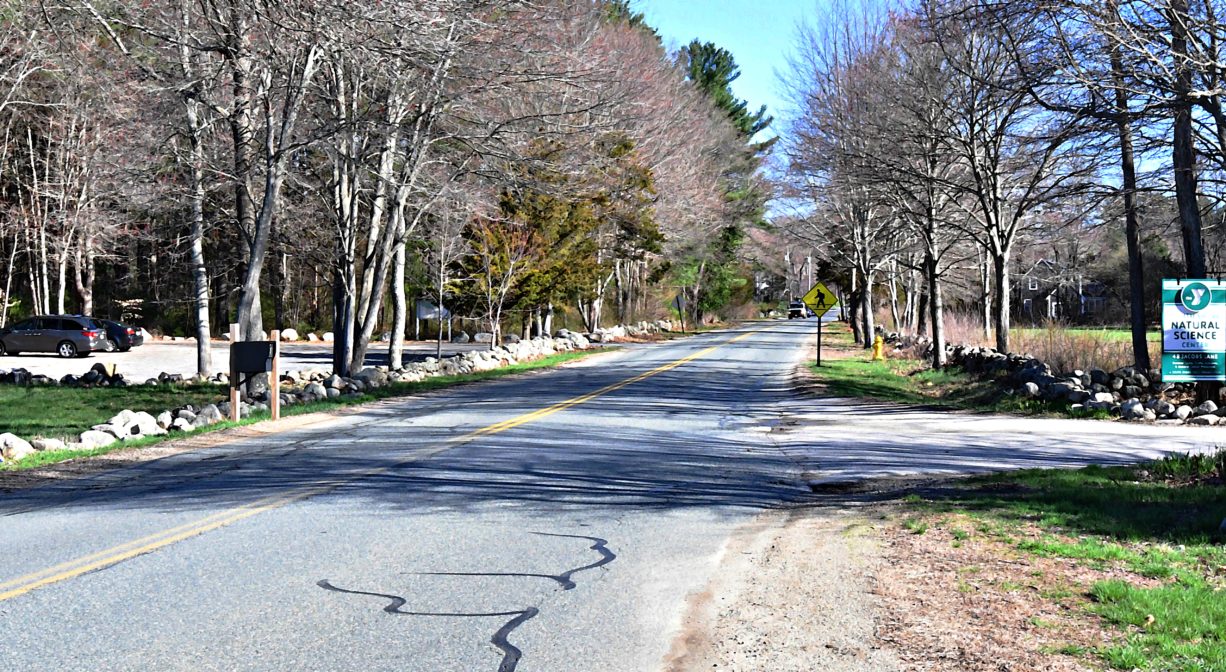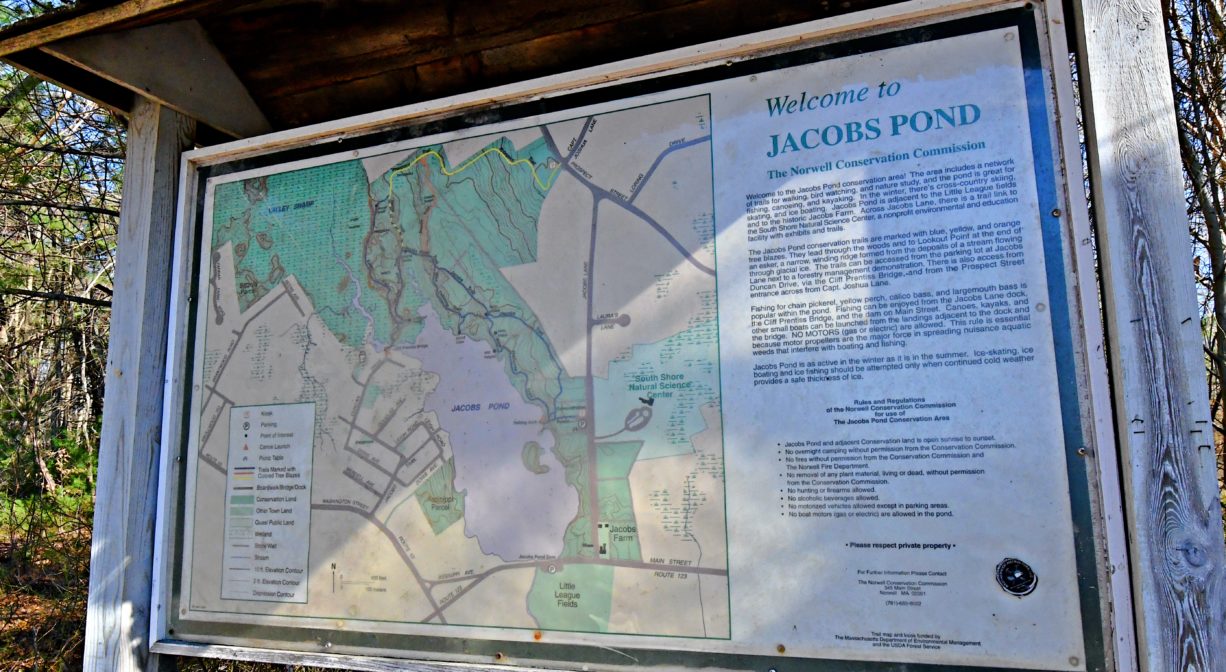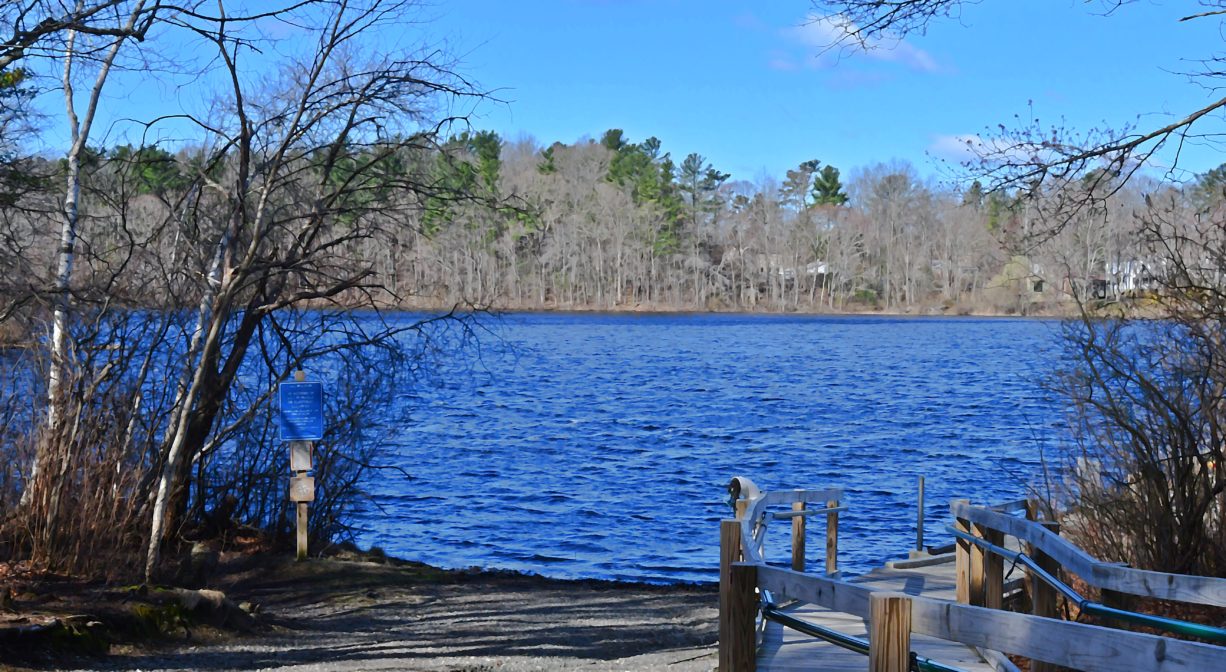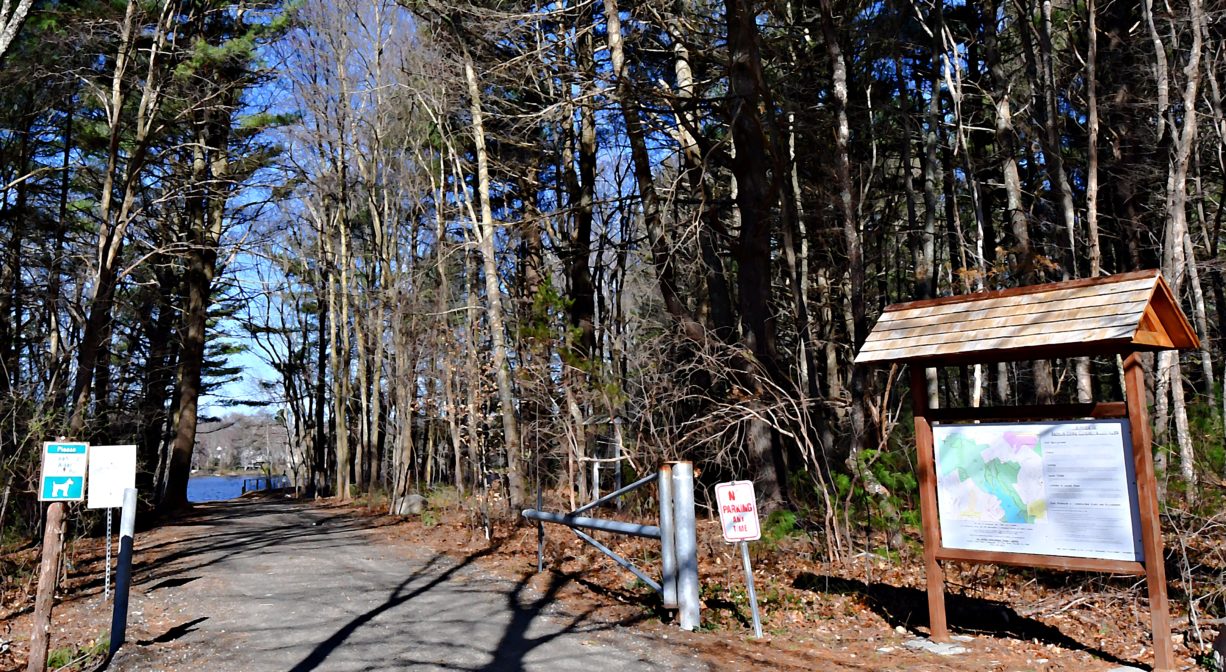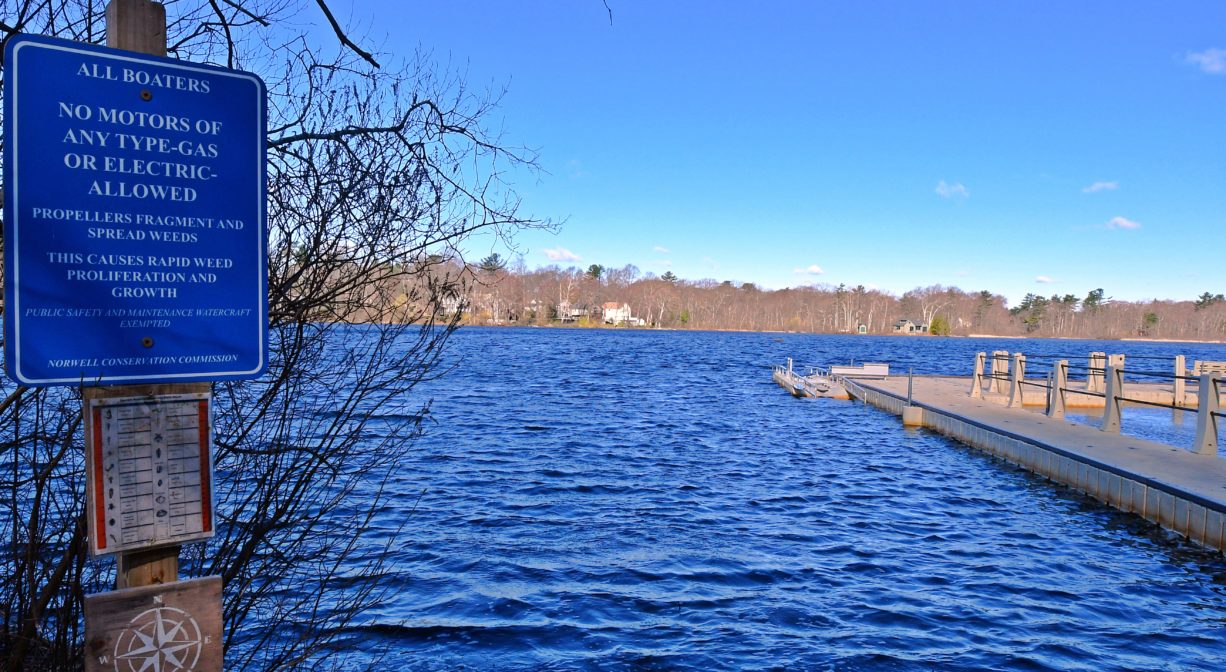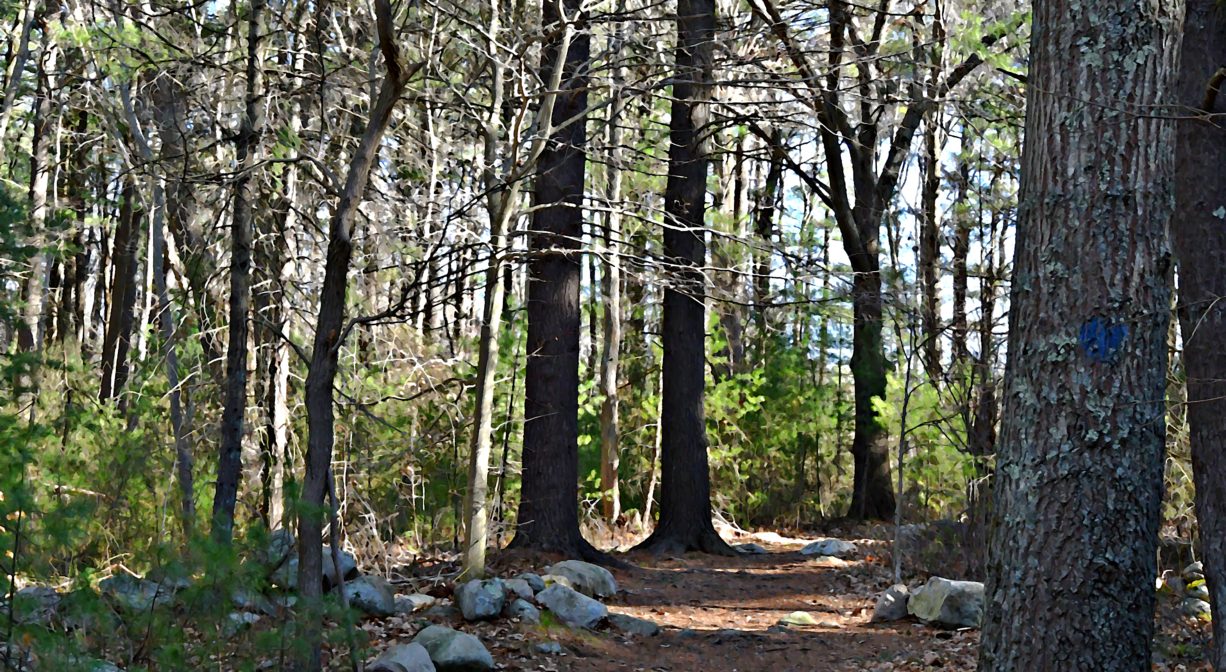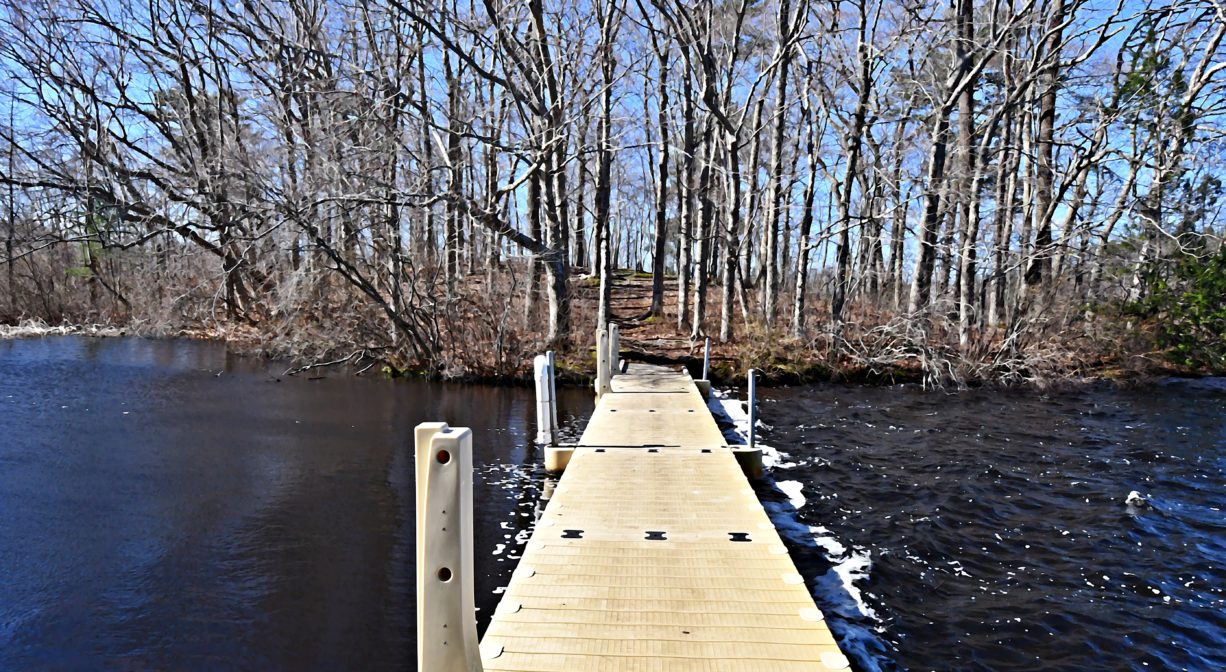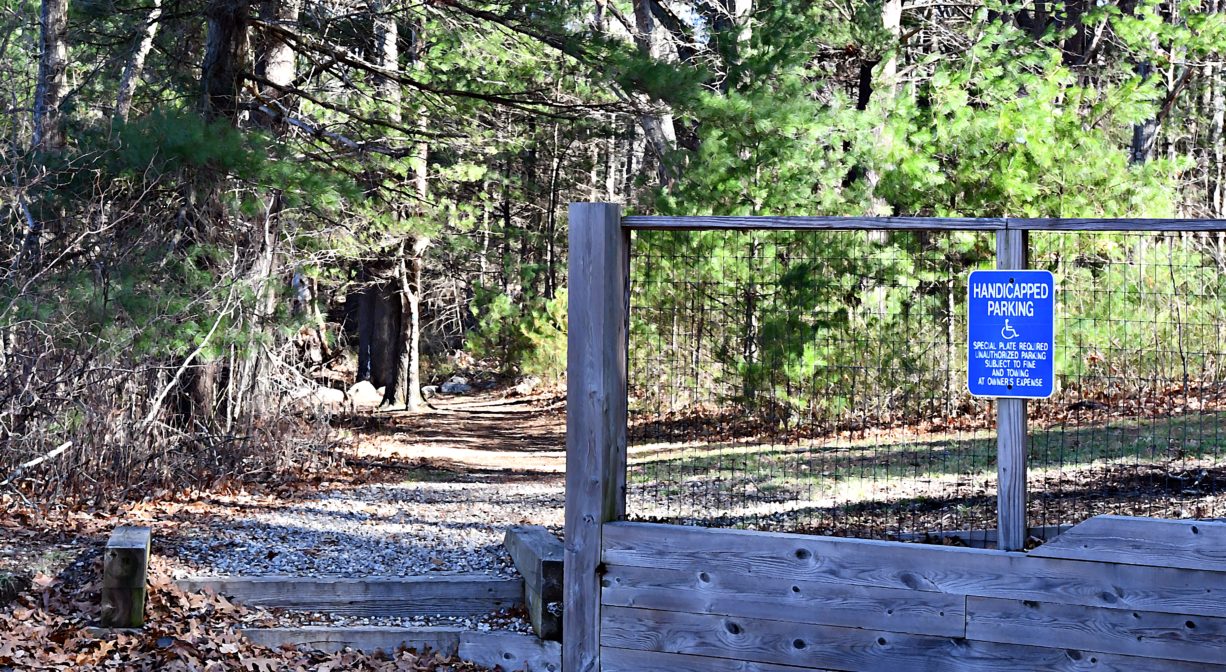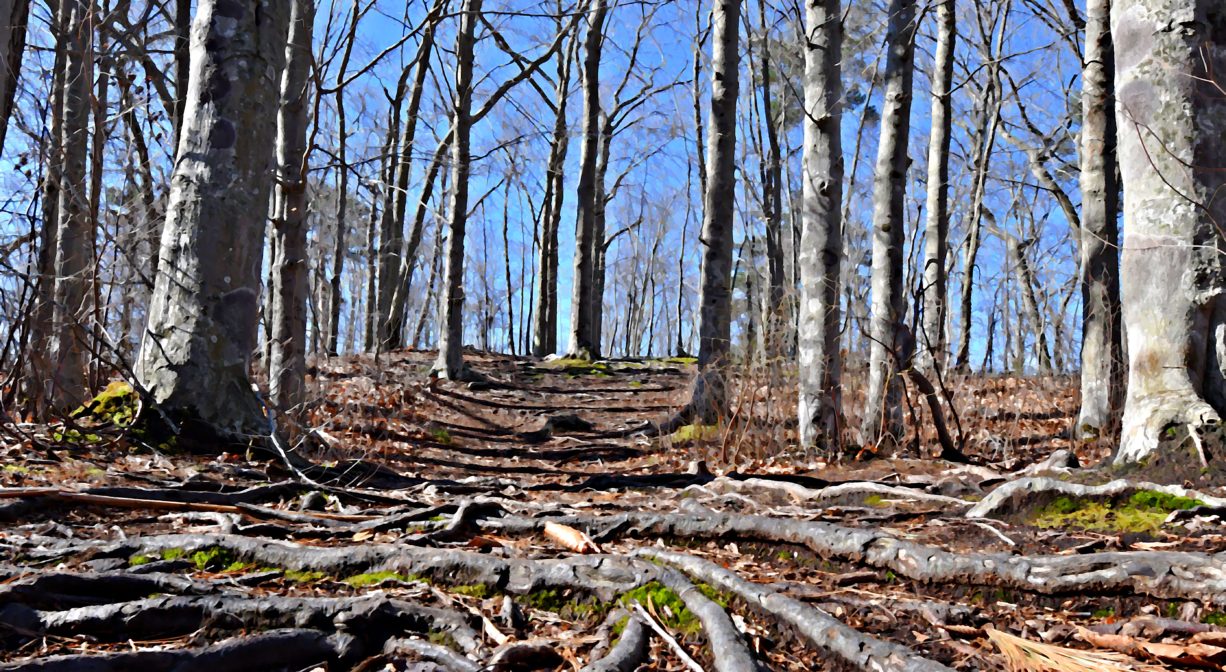81 Jacobs Ln, Norwell, MA 02061, USA
Norwell Conservation: (781) 659-8022
Owned By: Town of Norwell
The Jacobs Pond Conservation Area features 189 acres of Norwell Conservation land with an extensive trail system around the north, east, and west sides of the 60-acre pond, and occasional boardwalks. Winter activities here include cross country skiing, ice skiing, ice boating, and ice fishing.
There are canoe/kayak launches at both the Jacobs Lane and Duncan Drive entrances. There is a fishing dock at Jacobs Lane. Other fishing locations include the Cliff Prentiss Bridge near Duncan Drive, the island within the pond, and the water’s edge along Main Street. No motors (gas or electric) are permitted on the pond.
HUNTING: Those who hold town-issued permits may use only the western portion of this property (west of trails JP10 and JP13) for seasonal hunting and trapping. Hunting is not allowed on, or across, any trail. Visit the hunting page on Norwell’s website for details. Non-hunters, be mindful of hunting seasons, and wear bright orange if you’re entering the property during those times. Hunting is not permitted on Sundays.
FISHING ADVISORY: It’s important to know that some of our freshwater fisheries are contaminated with mercury, PFAS and/or other concerning substances. The Massachusetts Department of Public Health maintains an online database with up-to-date advisories regarding fish consumption, sorted by location. We recommend you consult this valuable resource when planning a fishing excursion.
Features
Jacobs Pond was created in 1723 when Third Herring Brook was dammed, at Main Street, to create power for a grist mill and later a sawmill. The sawmill burned down in 1920. Also at this site, there was a brick manufacturing facility (1680-1830).
The area itself is known as Assinippi. The name, given by early native inhabitants, means “rocky water.” There was a Native American settlement here prior to European contact, and there is a Native American burial ground across the street at the Union Cemetery.
The pond was originally called Snapper (or Snapper) Pond. “Snapper/Snappet” was a play on the word “Assinippi.” Later it was named for the Jacobs family, whose farmhouse, barn, and hay fields are located across Jacobs Lane (now overseen by Norwell’s Conservation and Historic Commissions).
This land is within the region of the Massachusett (or Massachuseuk) Native American tribe. For thousands of years, the land that today is known as Norwell was inhabited by indigenous people who grew crops, foraged, hunted, and fished in the Assinippi and North River areas. Circa 1617, a major outbreak of disease decimated an estimated 90% of the native population in New England, including the Massachusett and Wampanoag tribes that inhabited the South Shore. There are still descendants of these original inhabitants living here today. They are known as the Mattakeesett Tribe of the Massachusett Indian Nation , the Massachusett Tribe at Ponkapoag, and the Mashpee Wampanoag tribe.
Trail Description
Trail access from Jacobs Lane, from Prospect Street, and via the Cliff Prentiss Bridge off Duncan Drive. From the Jacobs Lane parking area, a dirt road leads to the pond and the trails. The trails are mostly dirt, but there are also some boardwalks that traverse wetlands. Some of the trails are very rooty. Along the western side of the pond, the trail follows an esker ridge.
Habitats and Wildlife
The headwaters for Third Herring Brook are located north of Jacobs Pond, in the southern portion of Valley Swamp. Third Herring Brook exits the pond from the southern side, at the dam. The brook forms the border between Norwell and Hanover, and flows into the North River downstream of the old stone bridge on Washington Street.
The North River rises from marshes and springs in Weymouth, Rockland and Hanson. It is approximately 10 miles in length, with its source at the confluence of the Indian Head River (Hanover) and Herring Brook (Pembroke). From there it flows through the towns of Hanover, Pembroke, Marshfield, Norwell, and Scituate to the Atlantic Ocean between Third and Fourth Cliffs, draining approximately 59,000 acres along the way.
Between Jacobs Pond and Historic Sylvester Field in Hanover, there aren’t many public places to view Third Herring Brook, but it’s exciting to consider everything that has been happening there lately! Since 2014, NSRWA has worked with federal, state, and local officials to remove three dams from the brook. As a result, water quality has improved and wildlife habitat has been restored. All three dams were originally constructed to provide water power to sawmills.
• The Mill Pond Dam, located behind today’s Hanover YMCA, was operated by the Clapp family. It was removed in 2014.
• The Tack Factory Pond (or Tiffany Pond) Dam, located on Cardinal Cushing School property, was established in the 1670s by Charles Stockbridge for a grist mill. Later, Recompense Tiffany took over operations, and the mill pond was named for him. In 1834, Zephaniah Talbot and Samuel Salmond established a tack factory on site. The factory building remained in use into the 20th century. According to Joseph Merritt’s History of South Scituate-Norwell, Samuel Salmond Sylvester owned it in 1938. The factory burned down in 1983, and the dam was removed in 2016.
• The Peterson Pond Dam, located behind Hanover Crossing, near the former site of the (c. 1976-2016) Hanover Mall Cinema, was established by the Curtis family c. 1692. According to John S. Barry’s History of Hanover, in later years it was owned by T. J. Gardner and then Samuel H. Church. It was removed in 2020.
• There was also a sawmill at Jacobs Pond, operated by the Jacobs family. The dam is still in place, and unlikely to be removed, but we are working with federal, state and local officials to install a fish ladder there.
At Jacobs Pond, the pond and conservation area provide habitat for small mammals, fish, turtles, frogs and birds. Common fish found here include chain pickerel, yellow perch, calico bass, and largemouth bass. Listen and watch for toads, turtles, and a variety of frogs (bullfrogs, green frogs, pickerel frogs). You may see snapping turtles and northern water snakes too.
The forest surrounding the pond is made up primarily of pine and oak, but you’ll also find beech, hemlock, maple, and a few clusters of mountain laurel. In the wetlands, look for ferns and skunk cabbage. Also present, a small pocket of Inland Atlantic White Cedar Swamp, and some Acidic Shrub Fen.
Historic Site: No
Park: No
Beach: No
Boat Launch: Yes
Lifeguards: No
Size: 189 acres
Hours: Dawn to Dusk
Parking: Limited on-site parking at Jacobs Lane and Duncan Drive.
Cost: Free
Trail Difficulty: Easy
Facilities:
Benches, picnic tables, boat dock, geocache.
Dogs: Dogs must remain on leash. Scoop the poop!
Boat Ramp: No
ADA Access: Dock and picnic tables near the dock are ADA Accessible.
Scenic Views: Yes
Waterbody/Watershed: Third Herring Brook (North River watershed)

